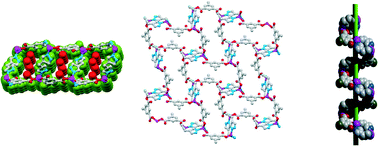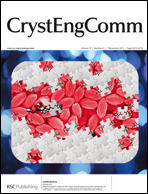Identification of a robust and reproducible noncluster-type SBU: effect of coexistent groups on network topologies, helicity, and properties†
Abstract
The present work is part of our ongoing quest for a robust and reproducible noncluster-type secondary building unit (SBU) using pyrazole based ditopic ligands and benzene polycarboxylic acids. We report here the construction of a series of Zn(II) coordination polymers using a tailor-made SBU, designed with the proper utilization of the hydrogen bonds of a pyrazole-based ligand 4,4′-methylene-bispyrazole (H2MBP) and isophthalic acid (H2IPA), and its derivatives (R-H2IPA; R = OH, OCH3, CH3, tBu, Br, I, NH2, N3). The results demonstrate that the substituent effect of R-isophthalates does play a decisive role in directing the structural assemblies of this system. One of the promising features of the 2D networks of this series is the presence of SBU-based helical motifs, which by and large remain elusive despite the plethora of reports on various SBU based networks. Throughout the series, hydrogen bonds, π–π interactions and other intermolecular interactions play a crucial role in stabilizing the resulting networks. Furthermore, some of these complexes exhibit some interesting photoluminescent properties in the solid state.


 Please wait while we load your content...
Please wait while we load your content...